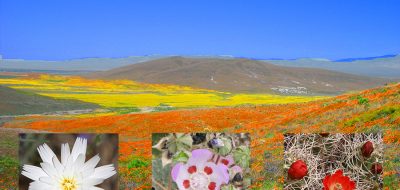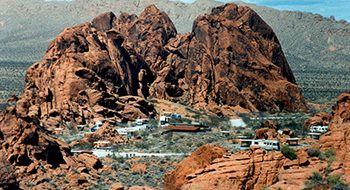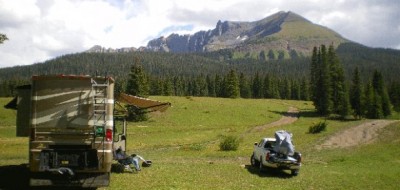It’s February. And if you’re an RV snowbird you know that means that the annual wildflowers will soon be popping their delicate heads out of the brutal desert floor. But not everywhere. Just like all living things in the desert, everything has its time and place and cannot be rushed or changed on a sudden whim.
Desert tortoises emerge from their burrows after a months-long hibernation only when conditions are right, that the desert’s support systems (like available food and water) are in place. Snakes, scorpions, and lizards won’t venture out until the sun warms their environment to the proper temperature, and the migrating birds stay put until Mother Nature informs them that the time is right.
Desert blooming wildflowers also have their own schedule based on ground temperature, number of daylight hours, amount of rainfall that has fallen, and other triggers that provide them with the information they need to know when to germinate, when to apply their most aggressive growth spurt, when to flower and how to use their flowers to attract the pollinators–bees, birds, and insects–that guarantee their existence over countless generations.
When all the markers are in alignment, the flowers burst from their dormancy and put on their show. And what a show it is! Some years are better than others, but they will always be there, and their behavior and blooming timelines, fortunately for those of us who look forward to their extravaganza, are quite predictable.
They bloom first at the lower elevations, which are the first to warm up, and alongside roads where the water runoff from the brief desert showers has provided adequate water. As the season progresses, they begin blooming at increasingly higher altitudes, so you can follow the blooming periods by ascending to the higher deserts or up the sides of mountains.
Some of the best places to see these wildflowers is in our state and national parks and monuments where stock grazing and other destructive land use has not diminished their numbers. Many of the parks have wildflower hotlines that provide daily reports on what is blooming and where. Go to the DesertUSA website for complete coverage of the blooming season and for hotline phone numbers when they become available around the end of this month or early March.
Click on the links below and you can go directly to the websites for some of the best wildflower blooming locations:
Anza Borrego Desert State Park (Hotline: (760)767-4684), Borrego Springs, CA (east of San Diego)
Arizona-Sonora Desert Museum‘s Spring Flowering Season page
DesertUSA’s page for Desert Wildflowers of Southern California:
Carriso Plain National Monument (near Bakersfield, CA). Wildflower hotline will be operable on March 6th.
Southeastern Arizona Wildflowers
DesertUSA’s Wildflower Hotlines & Information Sources
Organ Pipe Cactus National Monument
For more RVing articles and tips take a look at my Healthy RV Lifestyle website, where you will also find my ebooks: BOONDOCKING: Finding the Perfect Campsite on America’s Public Lands (PDF or Kindle), 111 Ways to Get the Biggest Bang for your RV Lifestyle Buck (PDF or Kindle), and Snowbird Guide to Boondocking in the Southwestern Deserts and my newest, The RV Lifestyle: Reflections of Life on the Road. NOTE: Use the Kindle version to read on iPad and iPhone or any device that has the free Kindle reader app.



